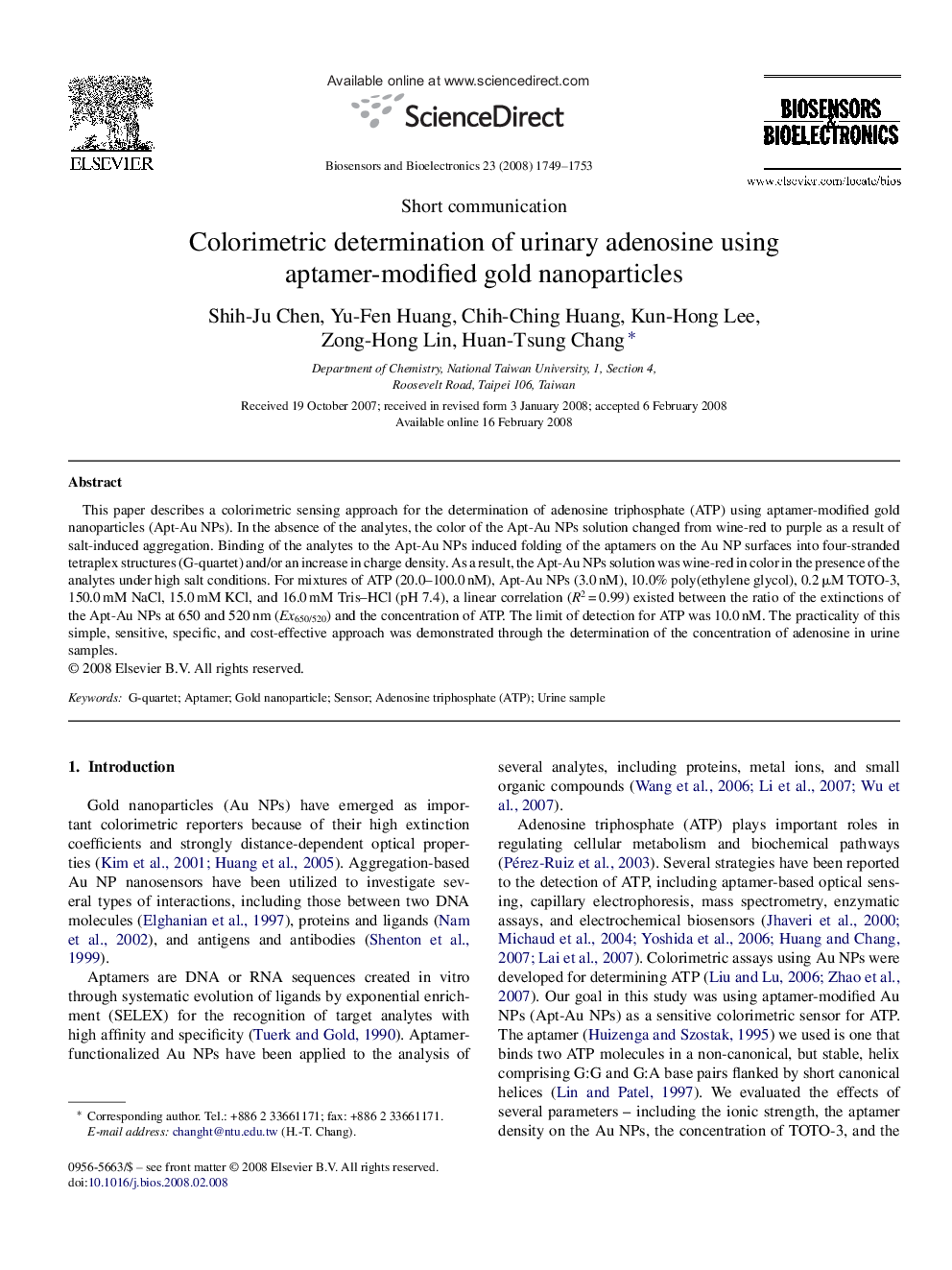| Article ID | Journal | Published Year | Pages | File Type |
|---|---|---|---|---|
| 869389 | Biosensors and Bioelectronics | 2008 | 5 Pages |
This paper describes a colorimetric sensing approach for the determination of adenosine triphosphate (ATP) using aptamer-modified gold nanoparticles (Apt-Au NPs). In the absence of the analytes, the color of the Apt-Au NPs solution changed from wine-red to purple as a result of salt-induced aggregation. Binding of the analytes to the Apt-Au NPs induced folding of the aptamers on the Au NP surfaces into four-stranded tetraplex structures (G-quartet) and/or an increase in charge density. As a result, the Apt-Au NPs solution was wine-red in color in the presence of the analytes under high salt conditions. For mixtures of ATP (20.0–100.0 nM), Apt-Au NPs (3.0 nM), 10.0% poly(ethylene glycol), 0.2 μM TOTO-3, 150.0 mM NaCl, 15.0 mM KCl, and 16.0 mM Tris–HCl (pH 7.4), a linear correlation (R2 = 0.99) existed between the ratio of the extinctions of the Apt-Au NPs at 650 and 520 nm (Ex650/520) and the concentration of ATP. The limit of detection for ATP was 10.0 nM. The practicality of this simple, sensitive, specific, and cost-effective approach was demonstrated through the determination of the concentration of adenosine in urine samples.
